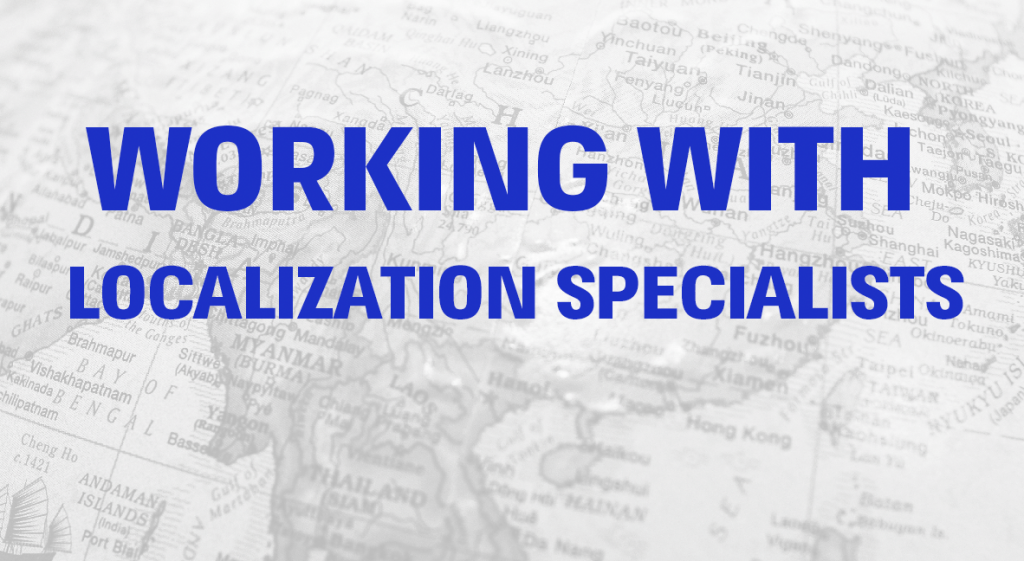If you’ve been involved in the creation and design of a digital product in recent years, you may be familiar with the term “Localization”.
When I was first starting out as a translator, I had no idea what that meant. I remember trying to understand what the big deal is. It’s just a fancier word for translation? It’s a buzz-word? It’s something related to code?
But as I started to get more involved in the UX world, I came to realize that localization is not simply translation, just like UX writing is not your standard copywriting job. It’s a whole different world and one that requires brand new work processes. Today, there’s no excuse for embarrassing localization failures like this:
The previously one-sided communication between end-clients and translators is and should be a thing of the past.
We’re seeing companies like Airbnb, Google, and Spotify start to invest more time, energy, and money in creating copy that improves and enhances the user experience. And in order to scale up, increase their value, and expand their audience, they also have to invest in the localization process.
But what does that even mean?
How can you make sure that your perfectly crafted copy works just as well after the translation process?
How can you trust that your localization process allows your localization specialists to deliver the best possible experience to your users?
Whether you’re a UX writer, designer, product manager, or just any type of digital experience creator, here are some key things you can do to create an effective and successful localization process at your company:
Step 1: The brief
You go through a lot of different stages when you’re writing UX copy. Meetings with your product manager, user research, conversations with designers, design iterations, consultations with legal, and the list probably goes on.
By the time you have a final (first) iteration of your copy, you’ll have gathered a lot of information that informed your decisions.
Add context. Then add more context.
When you’re writing your brief, you have to keep in mind that the people translating your copy won’t have any of that context.
If you don’t give it to them, they will make decisions based on their own assumptions. Those assumptions might be relatively accurate, but they might also be completely off-base.
UX writing is all about precision and accuracy, so you probably shouldn’t let them guess.
How? For example, let’s say your string is “Complete payment”. Seems simple enough at first glance, but there are quite a few things you should clarify about it. Is it a header or a button? Should “complete” be a verb or a noun? What kind of payment is it? Will the user be charged immediately? Have they already inserted their credit card information? All of these details might influence the quality and accuracy of the translation.
Help them maintain consistency.
But it’s not just about the context of the English copy — it’s also about consistency in their own languages.
If your localization specialists translated the word “payment” somewhere else in the product, what word did they use? If they already translated other parts of this screen, what kind of language have they used there? What was the tone of voice? Did they use a specific grammatical gender?
If they don’t have that information, they won’t be able to deliver a consistent experience to your users.
How? Share with them related strings or projects. Depending on the system you’re working with, it might be links to previous projects, string numbers, or just a link to the live translation. If you’re not sure, just ask them what they need.
Don’t just tell them what to do — tell them what not to do.
Once you’ve covered general context and consistency, spend some time thinking about the constraints you faced and the decisions you made when you wrote this copy.
Is there a reason you specifically used the words “Complete payment” and not “Charge card”? Did you change your copy following feedback from legal? Did you change anything because of preliminary user research? Do you plan to run any A/B testing with prior copy they already translated? Don’t forget to mention these things.
How? For example, if you’re writing the words “10% off” because legal doesn’t want you to use the word “discount”, don’t forget to mention that in the brief. If you don’t mention it, I guarantee that some of the translations will include the word “discount”. They’re professionals, but they can’t read your mind.
Step 2: The follow-up conversation
Now your copy and brief are out there, in the hands of your localization specialists. That’s just one part of the process.
I know you worked hard to provide as much context as possible (especially after reading the beginning of this post!), but the collaboration won’t be complete without the follow-up questions that come after the brief.
Treat the questions as part of the writing process
Don’t dismiss these questions. If professionals that know your product and have sufficient context are asking these questions, your users will be asking them too.
That’s the part where you ask yourself — is my copy clear enough? Is there anything I want to change based on this feedback?
How? Read their questions thoroughly, and consider whether your users will be asking themselves the same thing.
If it’s just a matter of finding the right words in a different language, that’s fine. But if it’s because your copy is too vague or ambiguous, you might want to rethink it for your current or next iteration.
Share the questions and answers with everyone
I know it takes a lot of time and effort to answer these questions. But here’s the best part : if you make sure all your localization specialists can see all of the questions and answers about a specific screen, you’ll be saving yourself valuable time.
And more than that — you’ll be able to make sure that everyone is part of the conversation, even the localization specialists who are less engaged, which means you’ll be improving the quality in all languages.
How? It depends on the system you’re working with, but even a simple Google Sheet can work, as long as everyone has access to it and everybody knows they should look at it before delivering their translation.
Step 3: The trust factor
For this process to succeed, there needs to be mutual trust and respect. A collaborative, thoughtful process will benefit both sides.
By treating this process with respect, you’ll be communicating to the localization specialists that their opinions matter. That their questions are valid, legitimate, and important. That this is a conversation, rather than a nuisance. You’ll be encouraging them to ask as many questions as possible and to think about your copy in depth.
I can tell you for a fact that engaged localization specialists deliver better quality localization. If they give your copy enough thought to ask questions, that means they understand it completely. It means they won’t miss the nuances. It means your users will get a better experience, no matter what language they’re using.
How? If their questions and comments influenced the final copy, let them know. If you think they raised a valid point but you have a counter-argument, tell them about it. If they think something is unclear, don’t dismiss their comment; say why you decided to keep it that way. Don’t pretend to be kind, actually show you’re listening.
That’s about it
Many people struggle to figure out the right process for collaborating with translators and localization specialists. If that’s where you’re at, bookmark this post and try these 3 simple steps to take the collaboration with your localization team to the next level.
You’ll be earning the localization specialists’ trust because they’ll know you’re willing to give them all the information they need, and so they’ll keep asking questions and engaging with your copy.
And in return, you’ll get peace of mind. You’ll know you can trust them to take the copy you worked so hard to craft and deliver it on a silver platter to users in all languages.
Sounds like a win-win to me 🙂
Do you think I’m missing anything? Want to talk about localization best practices? You can always find me on LinkedIn. Let’s chat!



